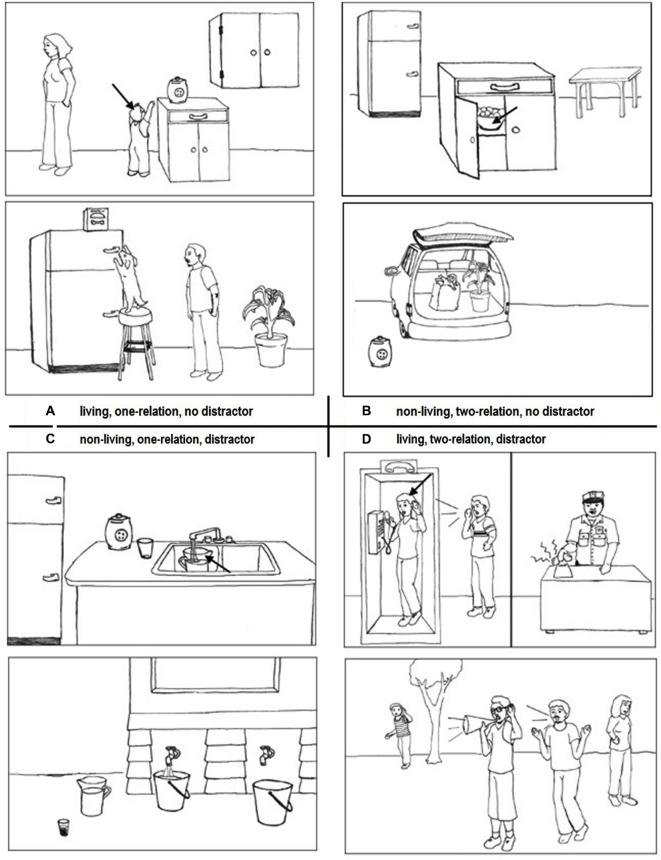Figure 1.
The examples of task problem types. The 24 problems included three factors that were varied factorially: number of relations (one-relation or two-relations), presence of distractor item (with or without distractor), and item type involved in the analogy (living or non-living items). Panel A shows an analogy with a single relation (reaching), involves living objects (people and a dog), and contains no distraction. Panel B consists of two relations (containing, and being contained), involves non-living objects (food, bowl, cabinet, groceries, bag, and car) with no distraction. Panel C is a one relation problem (containing) with non-living objects (water, pitcher, and bucket), with a distractor present (the pitcher in the lower picture). Panel D consists of two relations (receiving a message and relaying a message), living objects (people), and has a distractor (the woman in the lower picture).

